Get free scan and check if your device is infected.
Remove it nowTo use full-featured product, you have to purchase a license for Combo Cleaner. Seven days free trial available. Combo Cleaner is owned and operated by RCS LT, the parent company of PCRisk.com.
What is "eFax Email Virus"?
"eFax Email Virus" is a spam campaign used to proliferate a trojan-type virus called Hancitor. It is virtually identical to many other spam campaigns, such as Important Documents IRS, Sage Invoice, and Payslip SPAM. The deceptive "eFax Email Virus" email contains a message stating that users have received a fax message.
To view it, they must visit the link address provided, however, opening the link triggers download of a malicious MS Office document that infiltrates trojan into the system.
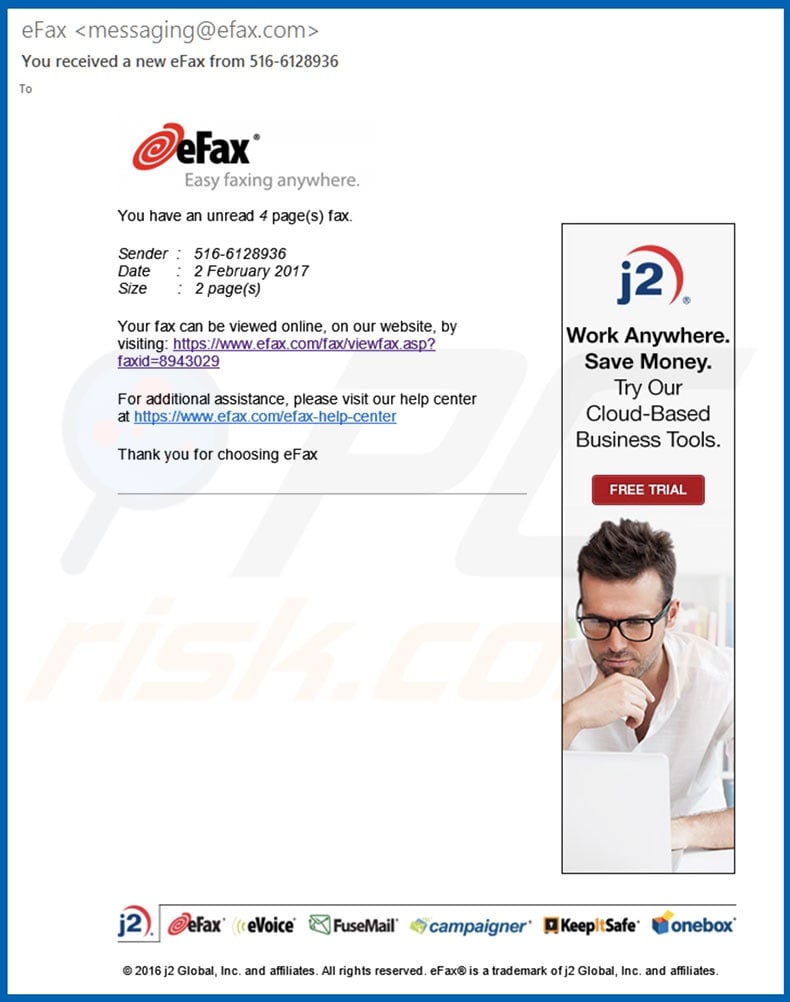
"eFax Email Virus" overview
The email states that users have received a number of unread fax pages. To access them, they must visit a website and download an MS Office document (named "invoice_[random_number].doc") that supposedly contains the fax. This is a scam - cyber criminals attempt to trick unsuspecting users into downloading and opening malicious attachments.
In addition, eFax is a legitimate company and has nothing to do with this spam campaign. Research shows that many cyber criminals claim to be legitimate companies or government departments to make their emails seem legitimate. Criminals continually register email addresses and web domains by including the names of companies/departments.
As mentioned above, the "eFax Email Virus" spam campaign is used to proliferate the Hancitor trojan. This virus opens backdoors for other malware (such as Pony) to infiltrate the system.
Most of these viruses record sensitive information (logins/passwords, banking information, etc.) These 'chain infections' can lead to serious privacy issues and significant financial loss. In addition, Hancitor connects infected computers to a botnet.
If you have already opened malicious attachments distributed using the "eFax Email Virus" spam campaign, immediately scan the system with a legitimate anti-virus/anti-spyware suite and eliminate all detected threats.
| Name | eFax spam |
| Threat Type | Trojan, Password stealing virus, Banking malware, Spyware |
| Symptoms | Trojans are designed to stealthily infiltrate victim's computer and remain silent thus no particular symptoms are clearly visible on an infected machine. |
| Distribution methods | Infected email attachments, malicious online advertisements, social engineering, software cracks. |
| Damage | Stolen banking information, passwords, identity theft, victim's computer added to a botnet. |
| Malware Removal (Windows) |
To eliminate possible malware infections, scan your computer with legitimate antivirus software. Our security researchers recommend using Combo Cleaner. Download Combo CleanerTo use full-featured product, you have to purchase a license for Combo Cleaner. 7 days free trial available. Combo Cleaner is owned and operated by RCS LT, the parent company of PCRisk.com. |
Spam campaign proliferated malware examples
There are many trojan-type viruses distributed using spam campaigns including, for example, TrickBot, Adwind, and FormBook. In most cases, these viruses gather personal information in various ways. Cyber criminals misuse private data to generate revenue (online purchases, money transfers, and so on).
In addition, viruses such as Hancitor are used to proliferate other malware (in most cases, ransomware). Therefore, trojans pose a direct threat to your privacy and web browsing safety.
How did eFax Email Virus infect my computer?
As mentioned above, "eFax Email Virus" spam emails are used to distribute malicious MS Office attachments. After opening this file, users are immediately asked to enable macro commands, otherwise the content will not be displayed properly. Once macros are enabled, the attachment immediately executes commands that stealthily download and install the Hancitor trojan.
Note that the malware only targets the Windows Operating System and users of other platforms are safe. Furthermore, the malicious attachment cannot execute commands if it is not opened using MS Office. Therefore, if the file is opened using other apps capable of reading these formats, the malware will not be downloaded.
How to avoid installation of malware?
To prevent this situation, be very cautious when browsing the Internet. Carefully analyze each received email attachment. If the file seems irrelevant or has been received from an unrecognizable email address, it should never be opened (these emails should be deleted immediately, without reading). Be cautious when downloading/installing/updating apps.
Some trojans are distributed using fake software update tools and a deceptive marketing method called "bundling" (stealth installation of third party apps together with regular programs). Keep installed applications up-to-date, however, this should be achieved using implemented functions or tools provided by the official developer only.
Carefully analyze each window of the download/installation dialogs and opt-out of all additionally-included programs. Software should be downloaded from official sources only, using direct download links. Third party downloaders/installers are monetized using the "bundling" method, and thus should never be used.
Having a reputable anti-virus/anti-spyware suite installed and running is also paramount. Furthermore, newer versions (2010 and above) of MS Office open newly-downloaded documents in "Protected View" mode.
This prevents malware download. Therefore, using old MS Office versions is risky - we strongly advise you to update them. If you have already opened an "eFax Email Virus" attachment, we recommend running a scan with Combo Cleaner Antivirus for Windows to automatically eliminate infiltrated malware.
A few variants of text presented in the "eFax Email Virus" email letters:
Subject: eFax
You have an unread 4 page(s) fax.
Your fax can be viewed online, on our website, by visiting: hxxps://www.efax.com/
For additional assistance, please visit our help center at hxxps://www.efax.com/efax-help-center
Thank you for choosing eFax
------------------------------------------
Subject: efax
Fax Message[Caller-ID: 1-543-276-0865]
You have received a 1 page fax
*The reference number for this fax is at did-1400166434-31309133229-154.
Please download and view Microsoft Word attachment
Please visit www.eFax.com/en/efax/twa/page/help if you have any questions regarding this message or your service
------------------------------------------
Subject: You have a new fax from eFax!
Faxing Simplified
You have a new fax from eFax! Click attachment to view.
Thank you for choosing eFax!
Sincerely,
The eFax Team
P.S. Too busy to answer all your business calls? Let eVoice answer, manage and route your phone calls 24/7. Try a Free 30-Day Trial Today!
Malicious attachment distributed via "eFax" spam campaign:
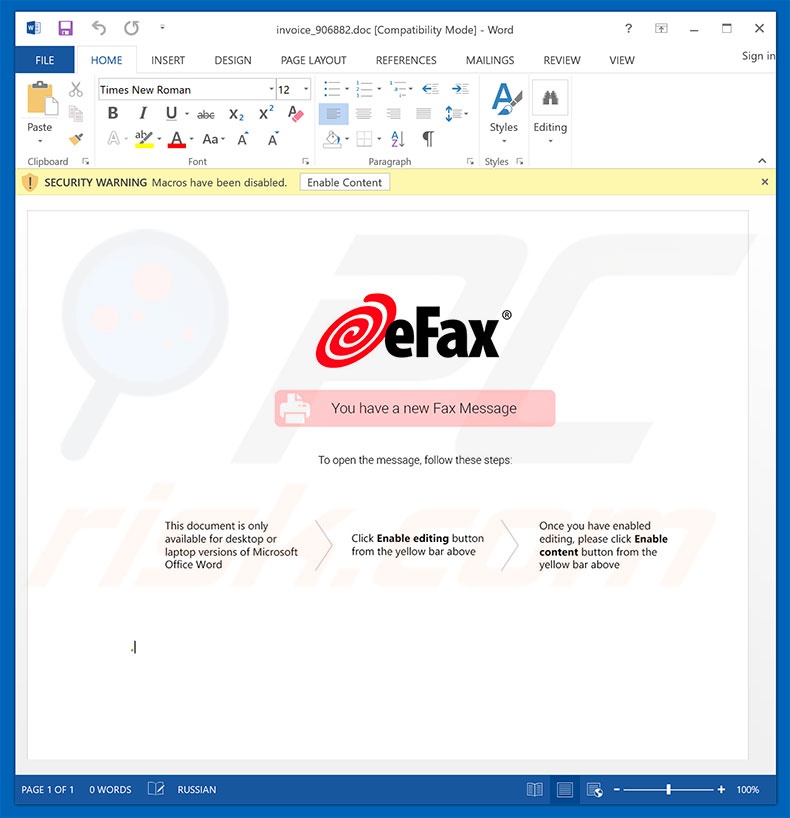
Another sample of malicious attachment:
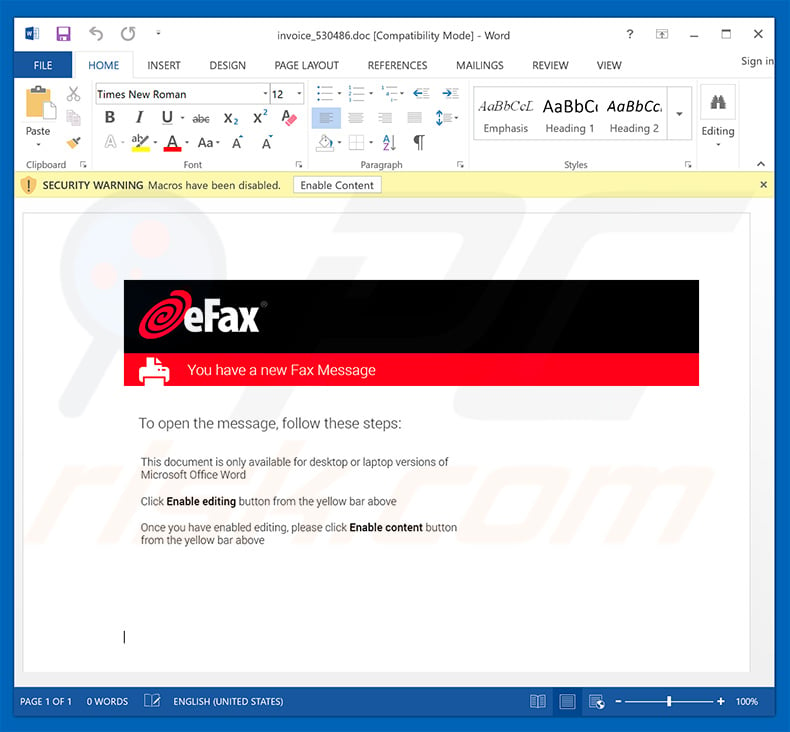
Another spam email campaign using eFax company name. This one is spreading TrickBot trojan through an infected email attachment pretending to be a fax received through eFax platform:
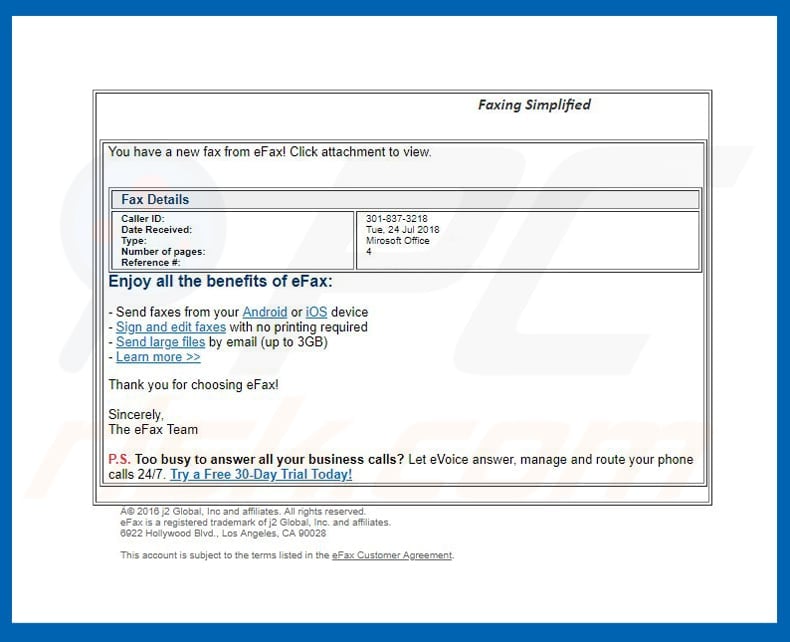
Screenshot of a malicious .doc attachment that infects victim's computer with a TrickBot trojan:
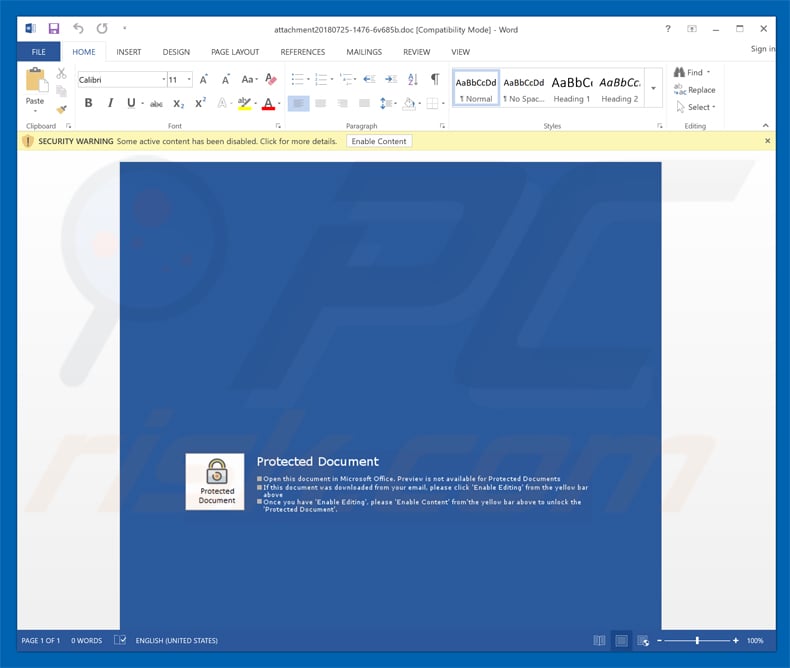
Another variant of "eFax" spam campaign which is now used to spread Agent Tesla RAT ("10357780.doc" attachment):
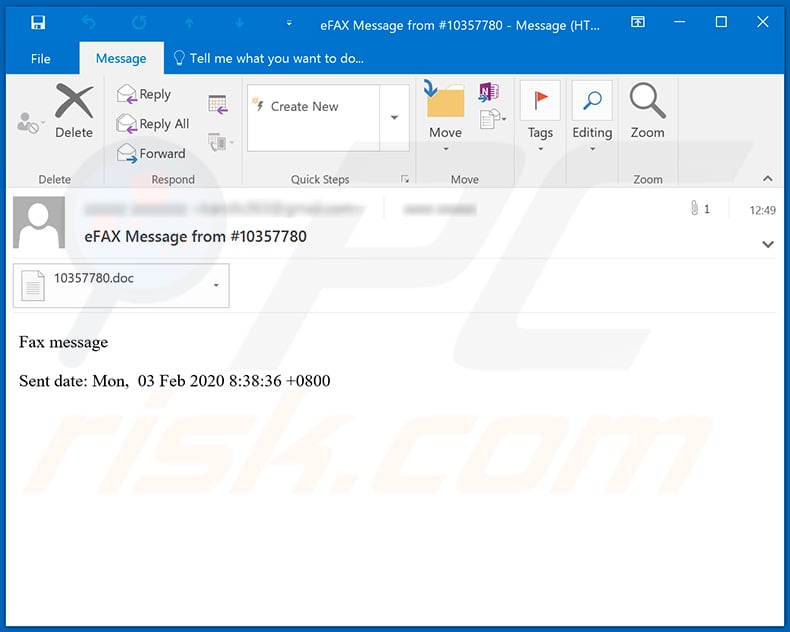
Text presented within this email:
eFAX Message from #10357780
Fax message
Sent date: Mon, 03 Feb 2020 8:38:36 +0800
Screenshot of the malicious MS Word attachment ("10357780.doc"):
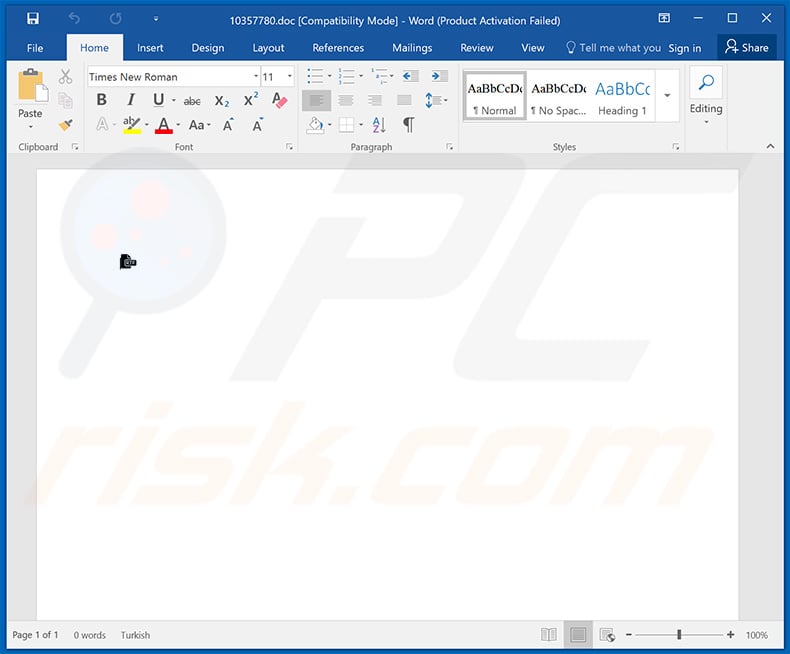
Screenshot of MS Excel window (asking to enable Macro commands) displayed once the aforementioned malicious attachment is opened:
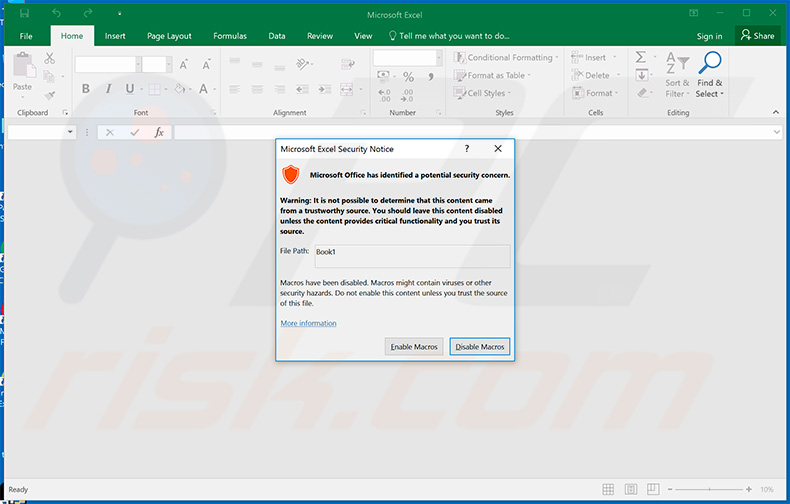
Another variant of eFax-themed spam email that redirects to a deceptive SharePoint-themed site which, in turn, redirects to a fake Microsoft login website used for phishing purposes:
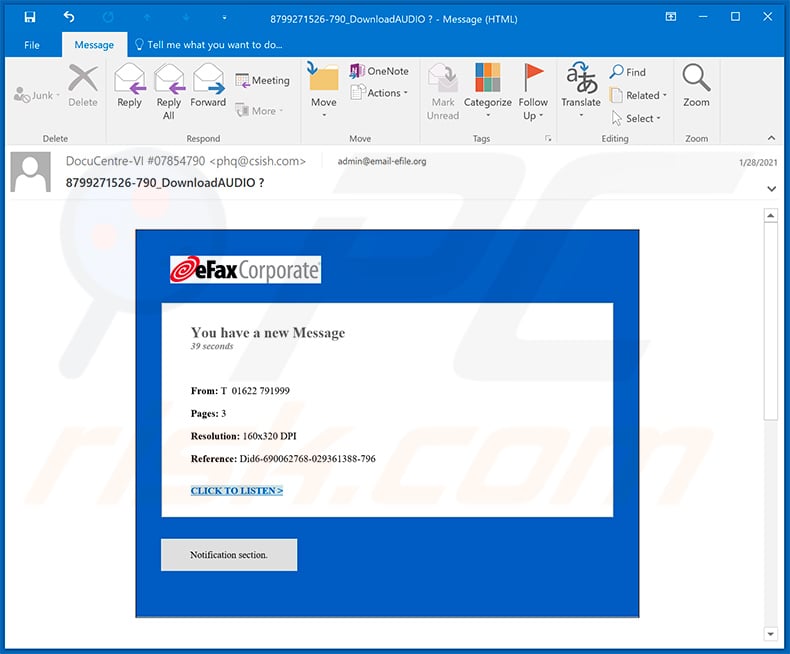
Text presented within:
Subject: 8799271526-790_DownloadAUDIO ?
You have a new Message
39 seconds
From: T 01622 791999
Pages: 3
Resolution: 160x320 DPI
Reference: Did6-690062768-029361388-796
CLICK TO LISTEN >
Notification section.
Screenshot of the promoted deceptive SharePoint-themed site:
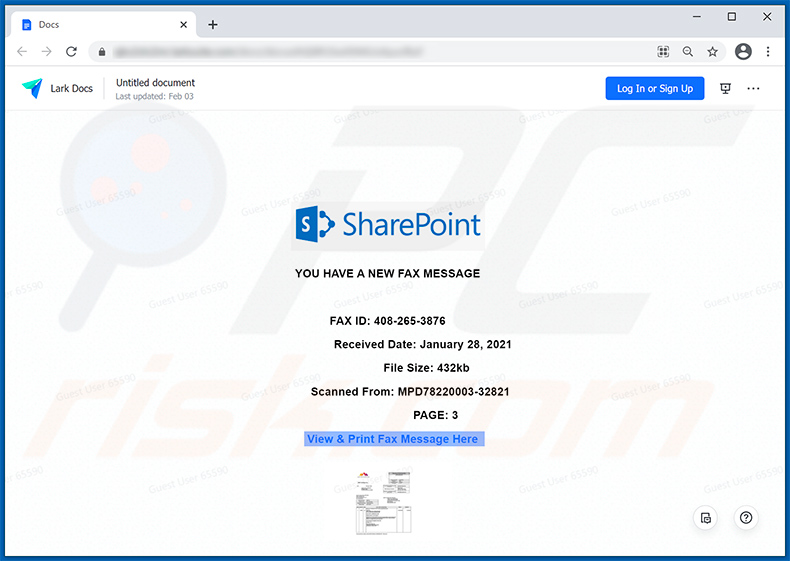
Screenshot of the fake Microsoft login website:
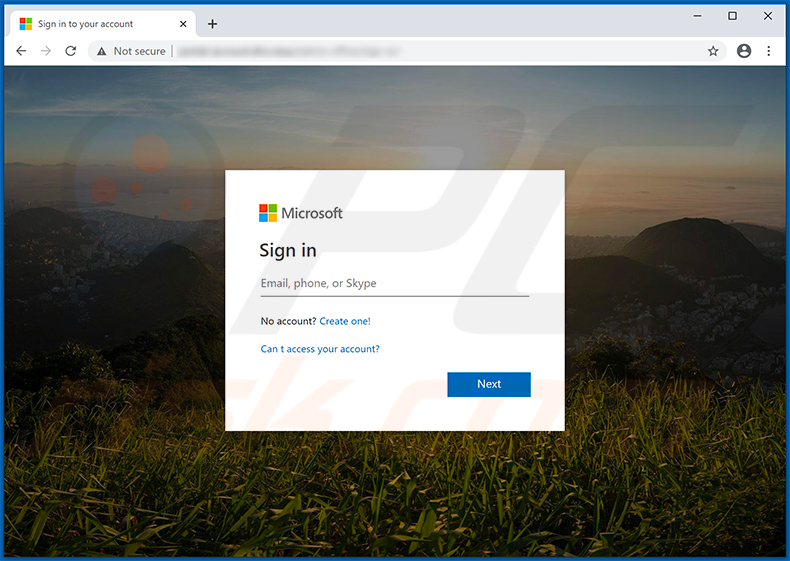
Yet another example of eFax-themed spam email spreading a malicious executable:
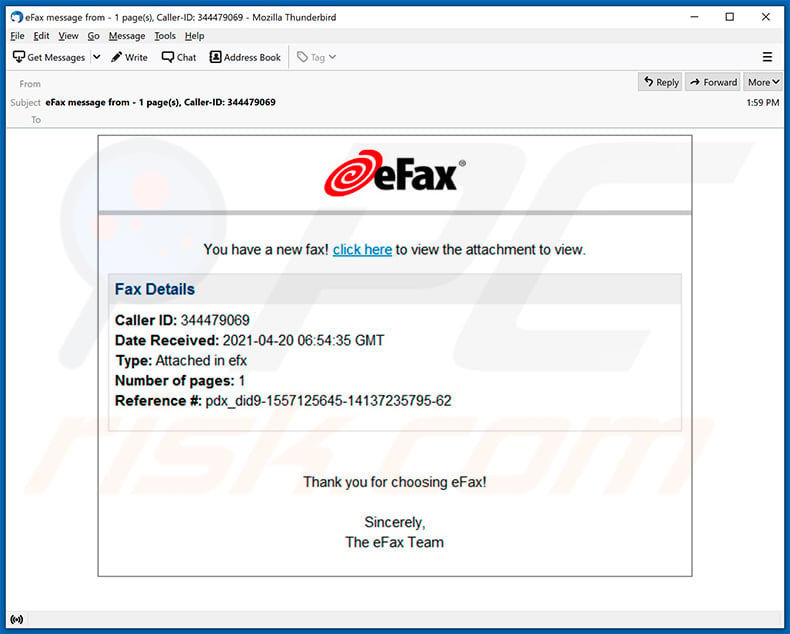
Text presented within:
Subject: eFax message from - 1 page(s), Caller-ID: 344479069
eFax
You have a new fax! click here to view the attachment to view.
Fax Details
Caller ID: 344479069
Date Received: 2021-04-20 06:54:35 GMT
Type: Attached in efx
Number of pages: 1
Reference #: pdx_did9-1557125645-14137235795-62Thank you for choosing eFax!
Sincerely,
The eFax Team
Yet another example of eFax-themed spam email used to promote a phishing website:
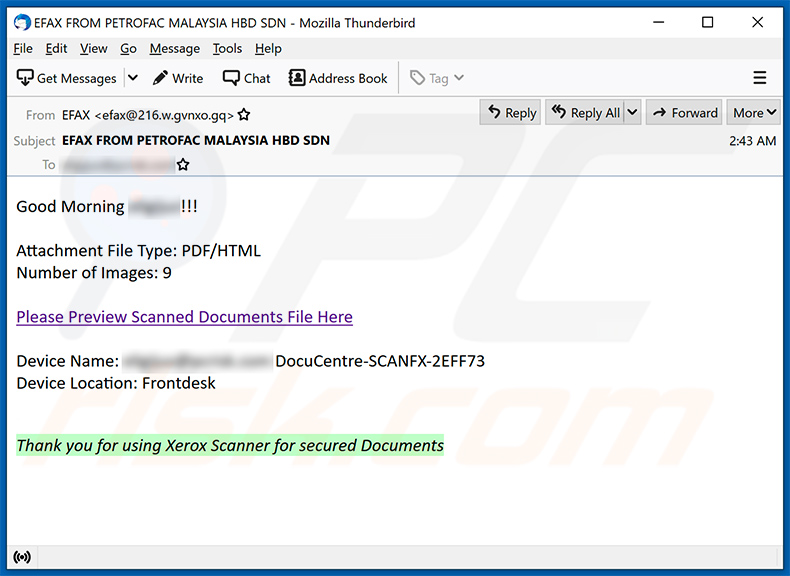
Text presented within:
Subject: EFAX FROM PETROFAC MALAYSIA HBD SDN
Good Morning ********!!!
Attachment File Type: PDF/HTML
Number of Images: 9Please Preview Scanned Documents File Here
Device Name: ******** DocuCentre-SCANFX-2EFF73
Device Location: FrontdeskThank you for using Xerox Scanner for secured Documents
Screenshot of the promoted phishing website:
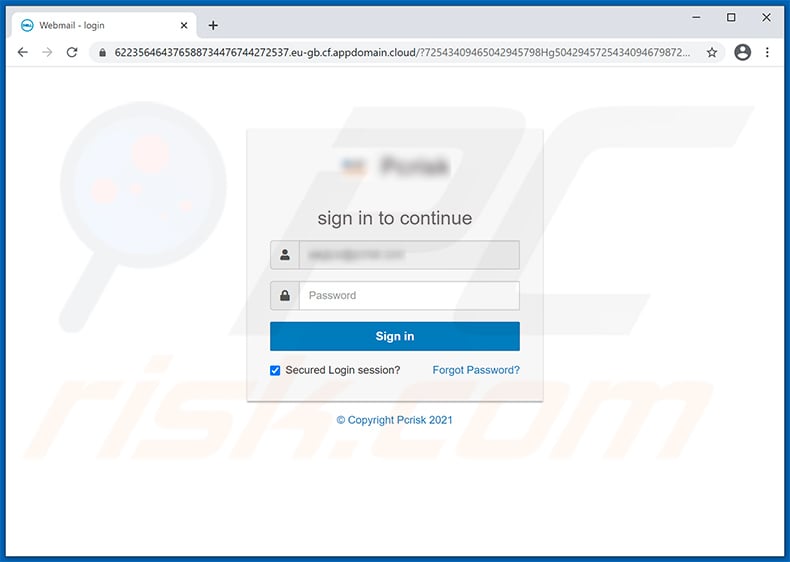
Another example of eFax-themed spam email promoting a phishing site:
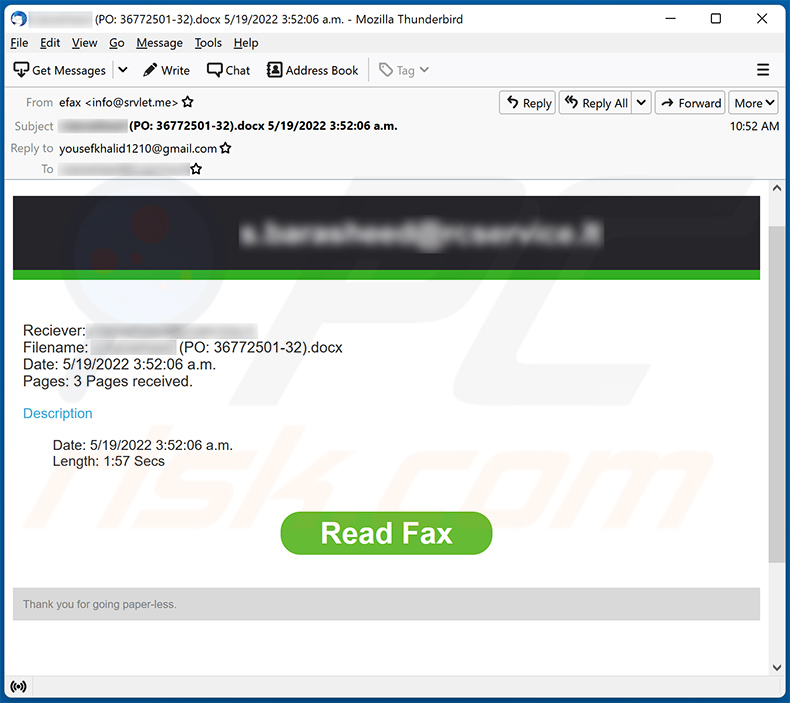
Text presented within:
Subject: - (PO: 36772501-32).docx 5/19/2022 3:52:06 a.m.
-
Reciever:-
Filename: - (PO: 36772501-32).docx
Date: 5/19/2022 3:52:06 a.m.Pages: 3 Pages received.
Description
Date: 5/19/2022 3:52:06 a.m.
Length: 1:57 SecsRead Fax
Thank you for going paper-less.
Screenshot of the promoted phishing site:
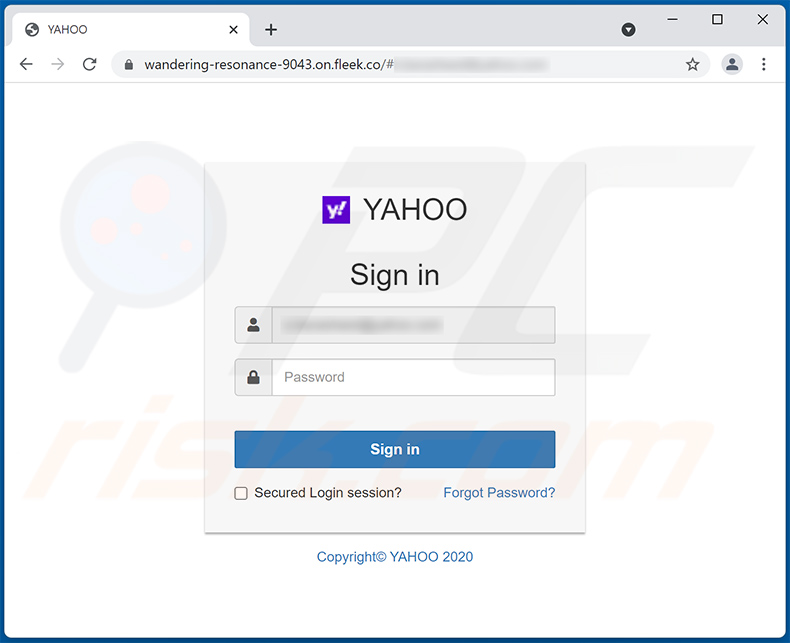
Another example of eFax-themed spam email distributing a malicious HTML document:
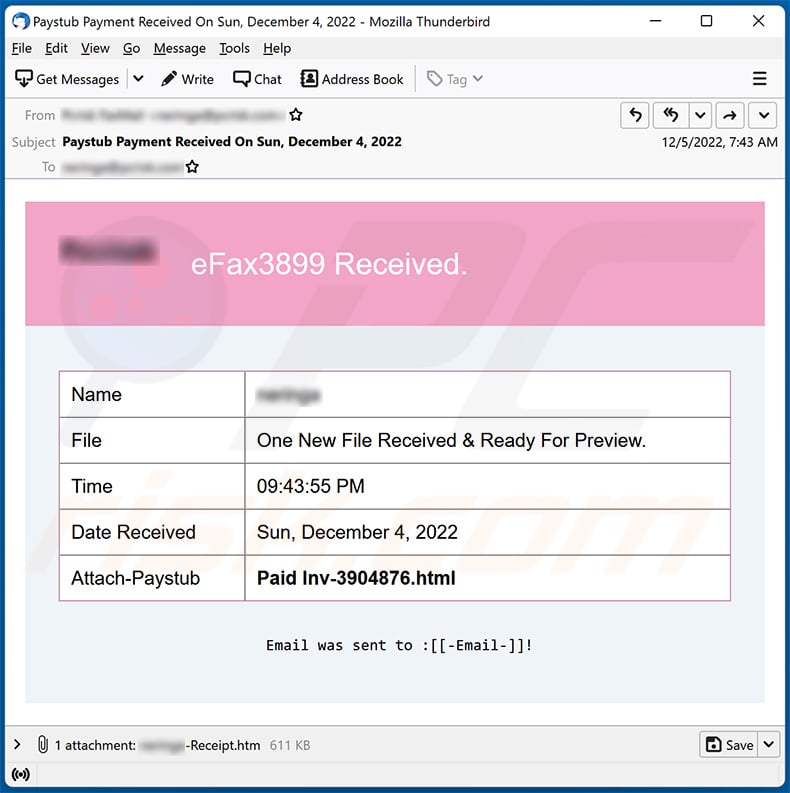
Text presented within:
Subject: Paystub Payment Received On Sun, December 4, 2022
-
eFax3899 Received.
Name -
FileOne New File Received & Ready For Preview.
Time 09:43:55 PM
Date Received Sun, December 4, 2022
Attach-Paystub Paid Inv-3904876.htmlEmail was sent to :[[-Email-]]!
Screenshot of the distributed HTML attachment designed for phishing purposes:
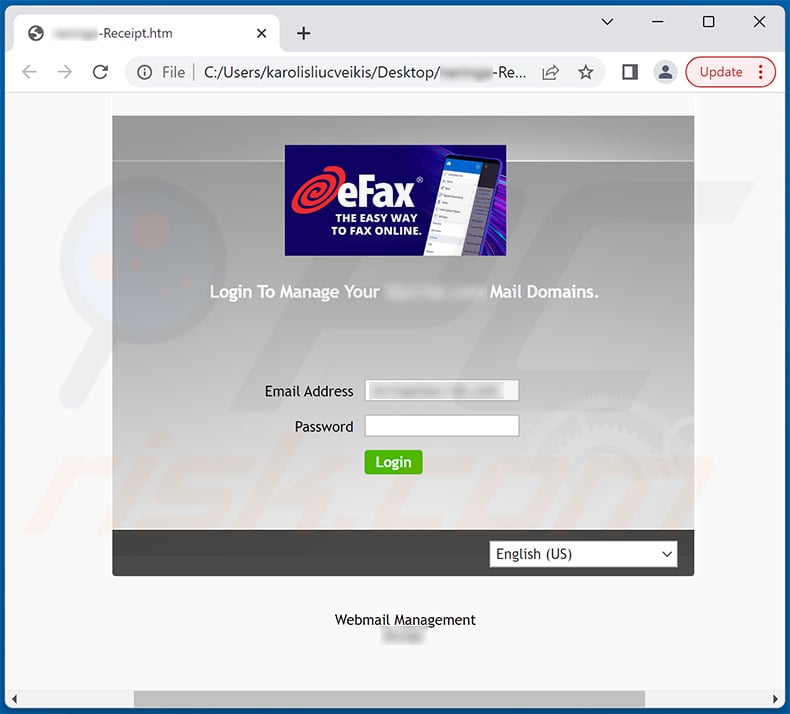
Example of another email from eFax-themed spam campaign:
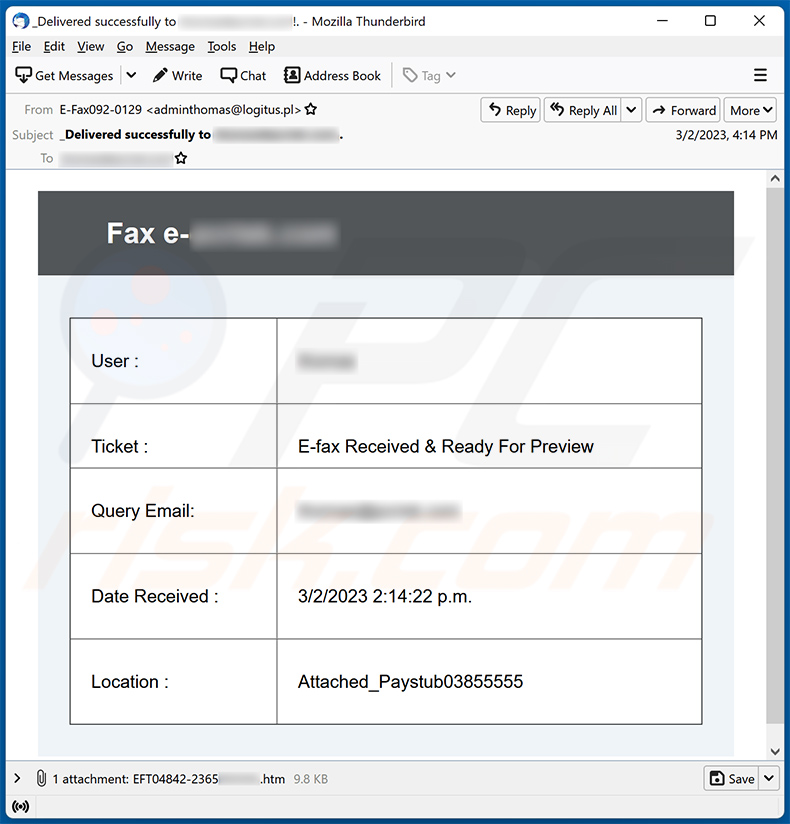
Text presented within:
Subject: _Delivered successfully to ********!.
Fax e-********
User : ********
Ticket : E-fax Received & Ready For Preview
Query Email: ********
Date Received : 3/2/2023 2:14:22 p.m.
Location : Attached_Paystub03855555
Screenshot of the HTML attachment designed for phishing:
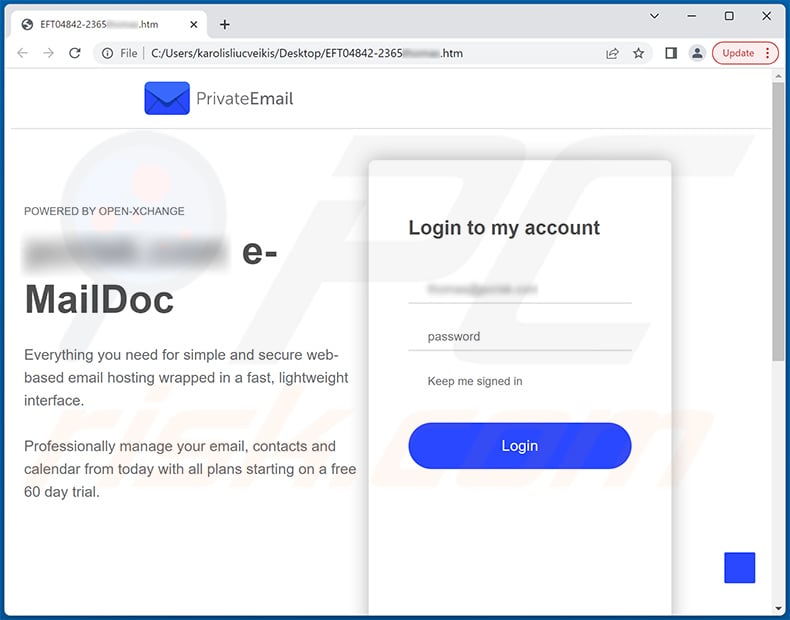
Instant automatic malware removal:
Manual threat removal might be a lengthy and complicated process that requires advanced IT skills. Combo Cleaner is a professional automatic malware removal tool that is recommended to get rid of malware. Download it by clicking the button below:
DOWNLOAD Combo CleanerBy downloading any software listed on this website you agree to our Privacy Policy and Terms of Use. To use full-featured product, you have to purchase a license for Combo Cleaner. 7 days free trial available. Combo Cleaner is owned and operated by RCS LT, the parent company of PCRisk.com.
Quick menu:
- What is eFax spam?
- Types of malicious emails.
- How to spot a malicious email?
- What to do if you fell for an email scam?
Types of malicious emails:
![]() Phishing Emails
Phishing Emails
Most commonly, cybercriminals use deceptive emails to trick Internet users into giving away their sensitive private information, for example, login information for various online services, email accounts, or online banking information.
Such attacks are called phishing. In a phishing attack, cybercriminals usually send an email message with some popular service logo (for example, Microsoft, DHL, Amazon, Netflix), create urgency (wrong shipping address, expired password, etc.), and place a link which they hope their potential victims will click on.
After clicking the link presented in such email message, victims are redirected to a fake website that looks identical or extremely similar to the original one. Victims are then asked to enter their password, credit card details, or some other information that gets stolen by cybercriminals.
![]() Emails with Malicious Attachments
Emails with Malicious Attachments
Another popular attack vector is email spam with malicious attachments that infect users' computers with malware. Malicious attachments usually carry trojans that are capable of stealing passwords, banking information, and other sensitive information.
In such attacks, cybercriminals' main goal is to trick their potential victims into opening an infected email attachment. To achieve this goal, email messages usually talk about recently received invoices, faxes, or voice messages.
If a potential victim falls for the lure and opens the attachment, their computers get infected, and cybercriminals can collect a lot of sensitive information.
While it's a more complicated method to steal personal information (spam filters and antivirus programs usually detect such attempts), if successful, cybercriminals can get a much wider array of data and can collect information for a long period of time.
![]() Sextortion Emails
Sextortion Emails
This is a type of phishing. In this case, users receive an email claiming that a cybercriminal could access the webcam of the potential victim and has a video recording of one's masturbation.
To get rid of the video, victims are asked to pay a ransom (usually using Bitcoin or another cryptocurrency). Nevertheless, all of these claims are false - users who receive such emails should ignore and delete them.
How to spot a malicious email?
While cyber criminals try to make their lure emails look trustworthy, here are some things that you should look for when trying to spot a phishing email:
- Check the sender's ("from") email address: Hover your mouse over the "from" address and check if it's legitimate. For example, if you received an email from Microsoft, be sure to check if the email address is @microsoft.com and not something suspicious like @m1crosoft.com, @microsfot.com, @account-security-noreply.com, etc.
- Check for generic greetings: If the greeting in the email is "Dear user", "Dear @youremail.com", "Dear valued customer", this should raise suspiciousness. Most commonly, companies call you by your name. Lack of this information could signal a phishing attempt.
- Check the links in the email: Hover your mouse over the link presented in the email, if the link that appears seems suspicious, don't click it. For example, if you received an email from Microsoft and the link in the email shows that it will go to firebasestorage.googleapis.com/v0... you shouldn't trust it. It's best not to click any links in the emails but to visit the company website that sent you the email in the first place.
- Don't blindly trust email attachments: Most commonly, legitimate companies will ask you to log in to their website and to view any documents there; if you received an email with an attachment, it's a good idea to scan it with an antivirus application. Infected email attachments are a common attack vector used by cybercriminals.
To minimise the risk of opening phishing and malicious emails we recommend using Combo Cleaner Antivirus for Windows.
Example of a spam email:

What to do if you fell for an email scam?
- If you clicked on a link in a phishing email and entered your password - be sure to change your password as soon as possible. Usually, cybercriminals collect stolen credentials and then sell them to other groups that use them for malicious purposes. If you change your password in a timely manner, there's a chance that criminals won't have enough time to do any damage.
- If you entered your credit card information - contact your bank as soon as possible and explain the situation. There's a good chance that you will need to cancel your compromised credit card and get a new one.
- If you see any signs of identity theft - you should immediately contact the Federal Trade Commission. This institution will collect information about your situation and create a personal recovery plan.
- If you opened a malicious attachment - your computer is probably infected, you should scan it with a reputable antivirus application. For this purpose, we recommend using Combo Cleaner Antivirus for Windows.
- Help other Internet users - report phishing emails to Anti-Phishing Working Group, FBI’s Internet Crime Complaint Center, National Fraud Information Center and U.S. Department of Justice.
Frequently Asked Questions (FAQ)
Why did I receive this email?
Cyber criminals send spam emails in mass-scale operations; hence, thousands of users receive identical letters.
I have read a spam email but didn't open the attachment, is my computer infected?
No, opening/reading a spam email will not jumpstart any malware download/installation processes. Systems are infected when the attachments or links present in spam mail are opened/clicked.
I have downloaded and opened a file attached to a spam email, is my computer infected?
Whether an infection occurred might depend on the file's format. If it was an executable (.exe, .run, etc.) - most likely, yes. However, document formats (.doc, .xls, .pdf, etc.) may require additional user interaction (e.g., enabling macro commands) to begin downloading/installing malware.
Will Combo Cleaner remove malware infections present in email attachments?
Yes, Combo Cleaner is designed to detect and remove threats. It is capable of detecting and eliminating nearly all known malware infections. Note that sophisticated malicious software tends to hide deep within systems - therefore, running a full system scan is crucial.
Share:

Tomas Meskauskas
Expert security researcher, professional malware analyst
I am passionate about computer security and technology. I have an experience of over 10 years working in various companies related to computer technical issue solving and Internet security. I have been working as an author and editor for pcrisk.com since 2010. Follow me on Twitter and LinkedIn to stay informed about the latest online security threats.
PCrisk security portal is brought by a company RCS LT.
Joined forces of security researchers help educate computer users about the latest online security threats. More information about the company RCS LT.
Our malware removal guides are free. However, if you want to support us you can send us a donation.
DonatePCrisk security portal is brought by a company RCS LT.
Joined forces of security researchers help educate computer users about the latest online security threats. More information about the company RCS LT.
Our malware removal guides are free. However, if you want to support us you can send us a donation.
Donate
▼ Show Discussion